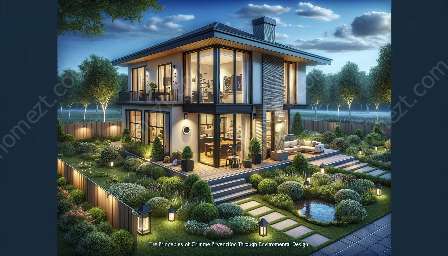Architecture plays a significant role in shaping our environment and has a direct influence on crime prevention through design (CPTED) and home safety & security. This topic cluster aims to explore the relationship between architectural design, CPTED, and how they contribute to creating safe and secure living spaces.
Understanding Architectural Design
Architectural design encompasses the art and science of creating structures and buildings that not only serve functional purposes but also contribute to the aesthetic, social, and environmental well-being of the inhabitants. Well-thought-out architectural designs take into consideration various factors such as spatial functionality, aesthetics, sustainability, and safety.
Crime Prevention Through Environmental Design (CPTED)
CPTED is an approach that focuses on using architectural design and the built environment to prevent crime and increase feelings of safety. It emphasizes the idea that the design and use of the built environment can influence human behavior and, consequently, impact crime rates. By incorporating CPTED principles, architects and urban planners can create environments that deter criminal activities and promote community safety.
Key Principles of CPTED
- Natural Surveillance: This principle focuses on designing spaces and buildings in a way that allows for clear visibility and observation of public areas, reducing potential hiding spots for criminals.
- Access Control: Controlling access to buildings and spaces through thoughtful design, such as using fencing, landscaping, and architectural elements to guide access and discourage unauthorized entry.
- Territorial Reinforcement: This principle involves creating a sense of ownership and territoriality among residents by defining property boundaries and promoting a sense of community pride and responsibility for the area.
- Maintenance: Proper maintenance of buildings and public spaces communicates to potential offenders that the area is cared for and likely to be monitored, reducing the likelihood of criminal activity.
Integration with Home Safety & Security
When it comes to residential architecture, ensuring the safety and security of the occupants is of utmost importance. Architects and homeowners can collaborate to incorporate security features and design elements that align with CPTED principles to create a secure living environment. This may include installing effective lighting, securing entrances and windows, and utilizing landscaping to enhance visibility and deter potential intruders.
Designing for Safety and Comfort
Architectural design can significantly impact the comfort and safety of a home. From the layout and flow of spaces to the choice of materials and building techniques, every aspect of design can contribute to a secure and pleasant living environment. Considerations such as the placement of windows for natural surveillance, the use of durable and secure building materials, and the integration of alarm and surveillance systems can all play a role in enhancing home safety and security.
Conclusion
Architectural design and CPTED are closely interlinked, and when integrated with considerations for home safety & security, they can contribute to creating living spaces that are aesthetically pleasing, functional, and safe. By understanding and applying these principles, architects, urban planners, and homeowners can work together to promote environments that discourage criminal activities and prioritize the well-being of the community.


